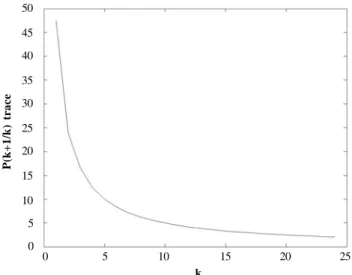Kalman filter technique for multisite modelling and streamflow prediction in Algeria
Texte intégral
Figure



Documents relatifs
Ante-mortem classification of patients with potentially treatable diseases and definite diagnosis in patients with a diagnosis of probable sporadic Creutzfeldt-Jakob disease before
EMSO is the European counterpart to similar large-scale systems in various stages of development around the world (see Favali et al., 2010): United States (Ocean Observatories
The purpose of the present paper is to study the stability of the Kalman filter in a particular case not yet covered in the literature: the absence of process noise in the
Unlike classical adaptive Kalman filters, which have been designed for state estimation in case of uncertainties about noise covariances, the adaptive Kalman filter proposed in
It is shown in this paper that the uniform complete observability alone is sufficient to ensure the asymptotic stability of the Kalman filter applied to time varying output
It is shown in this paper that the uniform complete observability is sufficient to ensure the stability of the Kalman filter applied to time varying output error systems, regardless
Unlike classical adaptive Kalman filters, which have been designed for state estimation in case of uncertain- ties about noise covariances, the adaptive Kalman filter proposed in
For the three models that we fitted, the correlation between the variance–covariance matrix of estimated contemporary group fixed effects and the prediction error